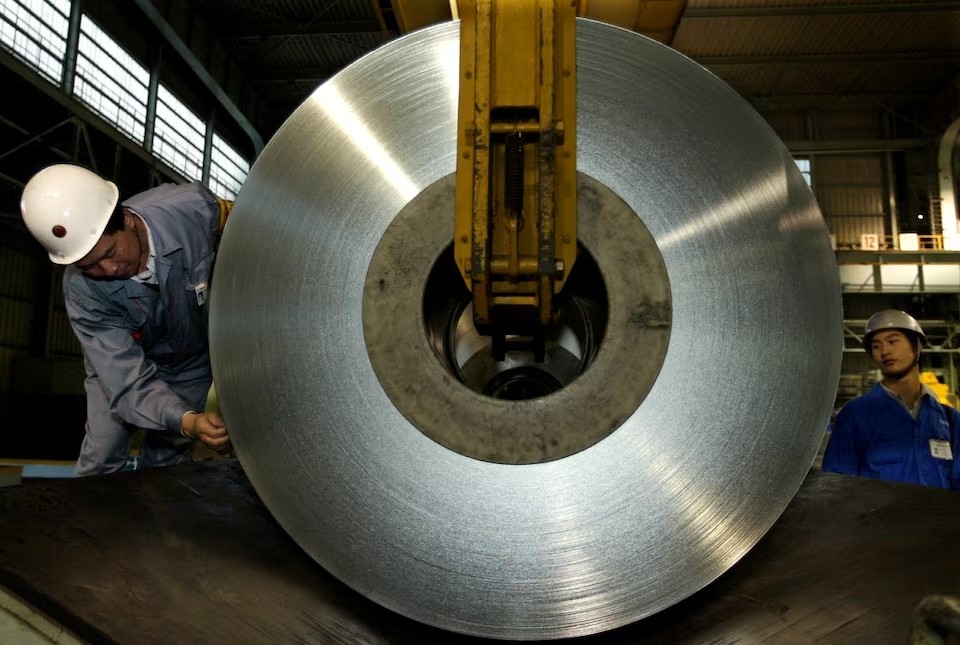It's no coincidence that nickel and tin are the two strongest performers in the London Metal Exchange (LME) base metals pack this year so far.
Supply in both markets is dominated by Indonesia, where production and exports are being affected by delays in approving annual work permits.
This is a relatively new phenomenon for nickel. Indonesian production has exploded over the last few years to the point the country now accounts for more than half of global supply.
Tin has been here before. Indonesia has long been the world's largest exporter, and the flow of metal to world markets has been interrupted several times in the past when the government tightened production and export rules.
Tin's misfortune, however, is that its supply chain is not just beholden to Indonesia's resource nationalism but also to that of the Wa State in Myanmar.
DOUBLE TROUBLE
Indonesia exported 78,000 metric tons of refined tin last year, equivalent to around a fifth of global demand.
Exports this year have slumped to just 55.4 tons, compared with 4,700 tons in January-February 2023.
The last time shipments ground to a complete halt was in August 2015, when the authorities introduced "clean and clear" rules on exports to enforce environmental standards.
This time it's a change to the annual permitting system. Tin may be coming under special scrutiny due to an unfolding illegal mining scandal.
The government has also made no secret of its intention to limit exports as a lever to push its tin sector further downstream.
It doesn't seem to have worked out how to replicate its nickel strategy in the tin market yet. But the threat to the rest of the world's tin supply is not going away.
Neither is that posed by the Wa State, the semi-autonomous region of Myanmar that controls the Man Maw mine, one of the world's largest tin resources.
All mining was suspended in August last year to allow for an audit of reserves. The suspension has been partly lifted, opening a new tab for some smaller operators, although they will pay more in export tax, according to the International Tin Association (ITA).
However, operations at Man Maw have yet to resume. The ITA suggests the delay may reflect a policy re-think around the need to replenish the Wa government's strategic stockpile.
Amid the continuing uncertainty, one thing is clear. The ruling United Wa State Army aims to exert tighter control over the jewel in its mineral crown.
Myanmar and Indonesia are combining to squeeze global tin supply driven by the same resource nationalist impulse.
SURPLUS AND STOCKS REBUILD
The tin market can likely absorb the double hit over the short term.
The ITA estimates that global supply exceeded usage by 9,700 tons last year, attesting to the slump in demand from the electronics sector, where tin is used for circuit-board soldering.
Stocks registered with the LME and the Shanghai Futures Exchange (ShFE) more than doubled to 15,400 tons throughout 2023.
Those on the LME have recently been sliding as the halt to Indonesian shipments drags on. Headline inventory has fallen by 31% to 5,300 tons since the start of January.
Shanghai stocks, by contrast, have continued growing over the Chinese New Year holiday period and at a current 11,072 tons, the highest they have been since ShFE launched its tin contract in 2015.
The flow of raw material from the Man Maw mine in Myanmar to Chinese smelters has dropped but not as much as feared after the authorities allowed the processing of surface stocks. Many Chinese operators also built up stocks of concentrate ahead of the August suspension.
China's production of refined tin grew by 1.8% year-on-year to 169,000 tons, according to local data provider Shanghai Metal Market.
Tin users are lucky that the current supply disruption has come after a year of low demand and restocking of both raw material and metal.
FUTURE FRAGILITY
The question worrying the tin market is how long it will be before normal supply service is resumed in Myanmar and Indonesia.
LME three-month tin hit a seven-month high of $27,810 per ton on Friday and, currently trading around $27,460 per ton, is now up by 9.0% at the start of the year.
Even assuming a speedy resumption of Indonesian exports and mining in Myanmar, tin supply over the next few months looks challenging.
The longer-term threat is future supply disruption as resource nationalism drives both governments further down the road of export controls.
Tin's use as a circuit-board solder makes it a critical mineral for the current generation of electronics and the coming Internet of Things.
Yet it is one with an incredibly fragile supply chain, beholden to the politics of Indonesia and the United Wa State Army.
This year's supply squeeze maybe just a taster of things to come for tin.
Image source: REUTERS / Claro Cortes/File Photo
Source: https://www.reuters.com/markets/commodities/tin-supply-trapped-resource-nationalism-squeeze-2024-03-12/










